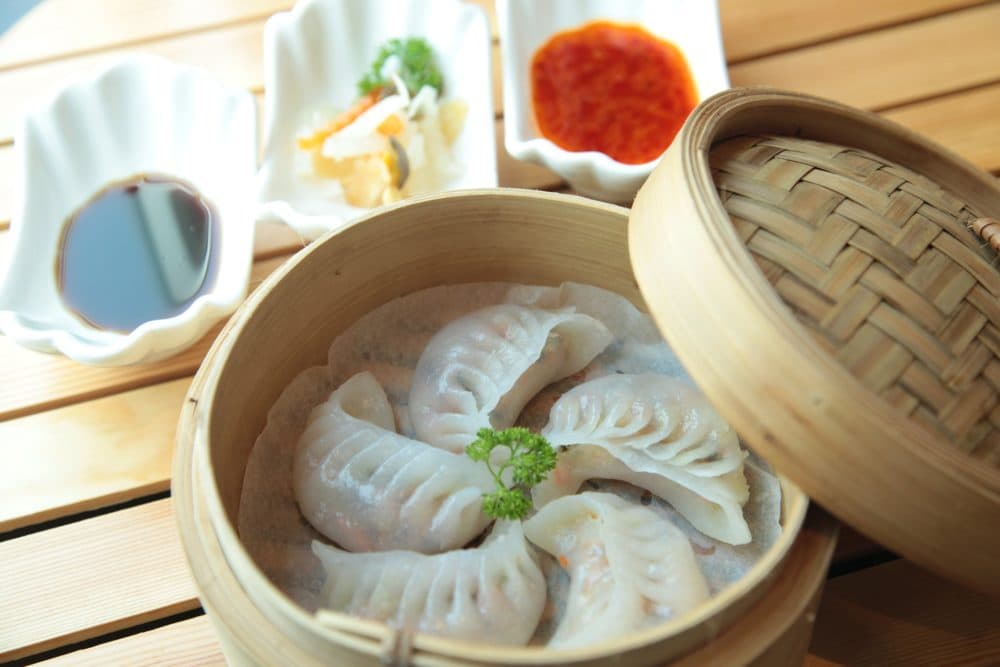Advertisement
Commentary
Let's Stop Putting Immigrant-Owned Restaurants Into A Box

In the 1950s, my highly educated and professionally accomplished grandparents, like so many other immigrants to the United States, pursued the American Dream by working in and eventually owning restaurants. The industry still provides that opportunity; the National Restaurant Association found in 2016 that 29 percent of restaurant and hospitality businesses are immigrant owned, compared to just 14 percent of all U.S. businesses.
While we may love immigrant-owned restaurants, we usually expect them to be cheap and “authentic” in a way that meets our expectations. (This is particularly true when it comes to cuisines from the Global South.) In immigrant-owned restaurants, diners' perceptions of authenticity correlate with low prices and with high online ratings, and these online ratings matter.
Immigrant-owned restaurants (those founded by new immigrants or taken over by later-generation immigrants) are all too often trapped in an alternate economy that disincentivizes innovation and creativity. Many young immigrant chefs faced with the daunting task of opening restaurants wisely choose to replicate recognizable food and other cultural stereotypes for their diners’ comfort. Economic survival trumps authentic self-expression.
The demand for "cheap eats" necessitates the use of cheap ingredients and cheap labor. Our limited conception of immigrant cuisines constrains chefs’ ability to achieve creative fulfillment, operate ethical businesses and garner the high status usually reserved for European restaurants. Our restaurant landscape will be more just and more delicious when change that. We need diners who will allow "ethnic" food to defy or exceed their expectations, and who will be willing to pay fairly for it.
There are a lot of reasons that immigrants go into food service when they arrive in the United States: They might have few options without formal education (but possess expertise in cooking and other domestic work), or they might seek workplaces where their native language is used in both internal and customer-facing contexts. Many go from working in restaurants to starting their own, making a living and supporting their families. But there’s usually a cap to their success because of how narrow our view of immigrant cuisines is and how limited our willingness is to pay for those dining experiences.
The American Dream also includes providing a better life and greater opportunity for generations to follow. For immigrant restaurant owners, this sometimes means making sure their children don’t end up running the family restaurant. So while Grandma and Grandpa opened China Garden because they lacked other options, they made sure that their children — one who would eventually hold a public health doctorate, others who become a physicist, an oncologist, a lawyer and a Wall Street trader — stayed focused on school. The closest they ever got to running the family business was working the takeout counter. After years of bending to American tastes and challenging stereotypes of Chinese cuisine, Grandma and Grandpa didn’t see a future for their children in the restaurant industry.
Two generations later, my siblings and I opened Mei Mei. It still feels like some diners only like the cuisine of my heritage when it’s cheap and predictable. Notably, we face the judgement of Chinese diners as much as that of white diners. We’re trying to push back with higher-priced food that allows us to have better wages, facilities and employment opportunities. Our cuisine isn’t authentic Chinese, but it’s authentic to us — three kids who grew up in Boston eating all kind of food.
We’re fighting an uphill battle, constantly asking ourselves if our food is both “Chinese enough” to meet diners’ expectations, and also good enough to justify a price point they aren’t used to paying for Chinese food. Fortunately, we have a supportive social network and a degree of socioeconomic safety that allows us to take these risks. Still, some diners leave Mei Mei feeling that the food was “fake,” “overpriced,” or “dangerously close to self-parody.” Others leave without even trying the food.
It’s time to make room in the market for all kinds of immigrant-owned restaurants. Immigrant restaurateurs have so much more to offer in food, ambiance and personality. We’re getting better at recognizing that: Look at the recent coverage of Ellie Tiglao’s tanam, and JuanMa Calderon and Maria Rondeau’s Celeste (a James Beard Awards Best New Restaurant semifinalist). Visit these restaurants with a willingness to experience new perspectives, even if you’re an expert on traditional Filipino or Peruvian food. Immigrant stories matter, especially in our current political climate, so when it comes to immigrant cuisines, diners should seek out restaurants that defy stereotypical narratives. Our restaurant industry truly can celebrate the diversity of our city once we set our narrow expectations aside.
